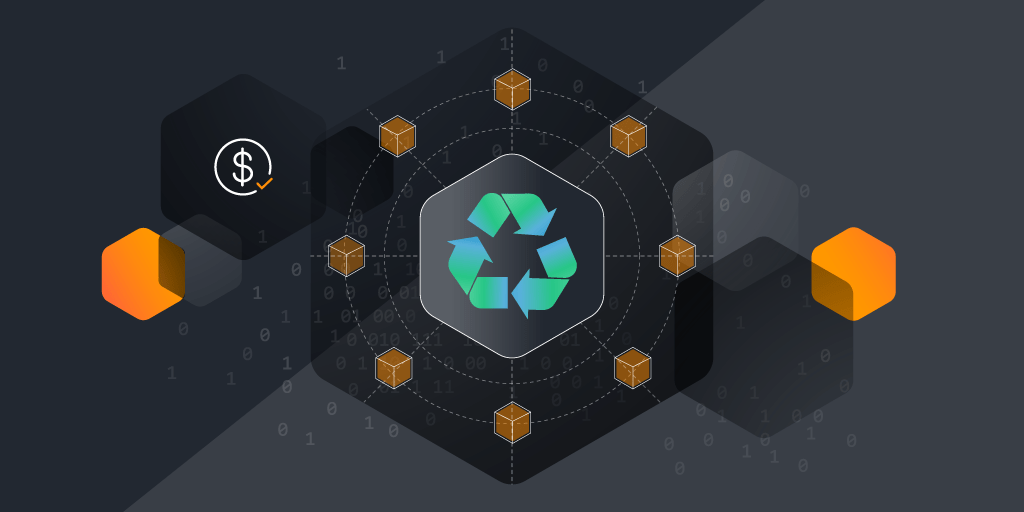
From CAASM to Risk Managament
The need for sustainable IT practices is more urgent than ever, with U.S. data centers expected to consume about 6% of the country’s power by 2026, according to the 2024 International Energy Agency report.
Achieving IT sustainability goes beyond just adopting green technologies; it requires a comprehensive approach to asset management that prioritizes energy efficiency, waste reduction, and IT asset lifecycle management. This strategy lessens environmental impact and increases operational efficiency, while lowering costs and strengthening an organization’s reputation.
In this blog, we explore the strategic role of asset management in achieving sustainable IT practices. You’ll learn insights into how organizations can align their technology investments with environmental, social, and governance (ESG) principles to build a more sustainable future.
What is ESG in Asset Management?
Environmental, social, and governance – or ESG – investing has grown in importance as more investors prioritize responsible investing and support companies that contribute positively to society. As such, sustainable IT practices have become crucial not only for minimizing environmental impact but for attracting investors.
IT assets such as data centers, servers, and personal computing devices have significant environmental impacts. They consume large amounts of energy, contribute to electronic waste, and often use finite resources. For example, data centers in the U.S alone accounted for about 2.5% of total electricity consumption in 2022 and that number could triple by 2030. Incorporating sustainable IT practices is both an ethical choice and a strategic move that benefits the planet and an organization’s profitability.
ESG practices in asset management involve strategies to minimize the environmental impact of IT operations, from hardware procurement and usage to electronic waste and disposal. ESG principles in asset management include:
- Environmental Practices: Focus on reducing energy use and carbon footprint by choosing energy-efficient hardware, optimizing resources, and implementing responsible disposal or recycling of end-of-life assets. This includes procuring devices with lower environmental impacts, like those with ENERGY STAR certification, and extending equipment life through refurbishment and reuse.
- Social Practices: Ensure fair labor in the supply chain, promote digital inclusivity, and support community initiatives. This involves sourcing from ethical vendors and donating retired assets to communities, helping to bridge the digital divide.
- Governance Practices: Maintain data security and regulatory compliance through robust data sanitization during asset disposal, adherence to data protection standards, and transparency in supply chain management. This includes aligning IT asset management with responsible sourcing and risk management policies.
The Benefits of Implementing Sustainable IT Practices
For businesses, adopting sustainable IT practices is more than an altruistic goal; it provides numerous business benefits, as well. By applying ESG principles to asset management, IT teams can enhance the long-term investment performance of their IT environment while aligning their portfolios with broader societal and environmental goals.
- Cost Savings and Efficiency: Sustainable IT practices often involve optimizing energy usage and extending the lifecycle of IT assets, leading to reduced operational costs. For example, using energy-efficient hardware and virtualization techniques can lower power consumption and cooling requirements in data centers. Additionally, practices like equipment refurbishment, recycling, and responsible disposal can help organizations avoid the high costs associated with frequent replacements and waste management.
- Enhanced Corporate Reputation: Companies that adopt sustainable IT practices often enjoy a better public image, as stakeholders increasingly value corporate responsibility and environmental stewardship. Adhering to sustainable practices can improve a company’s brand perception and attract environmentally conscious customers, investors, and employees.
- Compliance: Sustainable IT initiatives help ensure compliance with environmental regulations and standards, such as the Waste Electrical and Electronic Equipment (WEEE) Directive and the Restriction of Hazardous Substances (RoHS). This helps companies avoid potential fines for non-compliance.
- Improved Employee Morale: Emphasizing sustainability in IT can foster a culture of responsibility and innovation within an organization. Employees who are aware of their company’s commitment to sustainable practices are often more engaged and motivated, which can lead to higher job satisfaction and retention rates. Encouraging staff to participate in sustainability initiatives, such as energy-saving programs or recycling efforts, can also boost morale and promote a sense of shared purpose.
- Innovation and Competitive Advantage: Companies that prioritize sustainability are often seen as leaders in their industries and, as such, may benefit from new market opportunities, setting the stage for long-term success.
What Are the Challenges of Sustainable Asset Management?
One of the primary hurdles of sustainable IT asset management is the high initial costs associated with implementing sustainable practices, such as investing in energy-efficient technologies and eco-friendly materials. This is particularly true for smaller organizations with limited budgets.
Additionally, measuring and reporting the environmental impact of asset management practices can be complex and resource-intensive, requiring robust data collection and analysis tools to track metrics like carbon footprint and waste generation. Ensuring accurate and transparent reporting that aligns with global standards only adds to the complexity.
Another significant challenge is managing sustainability across the supply chain, especially when a company relies on external suppliers. What’s more, integrating sustainable practices into existing asset management systems often involves implementing technology upgrades and new workflows, which can disrupt operations and require additional training. Balancing sustainability with performance is also critical, since eco-friendly options can compromise asset performance or durability.
Strategies for Achieving Sustainable IT Practices
As organizations strive to reduce their environmental impact, implementing effective strategies for sustainable IT practices is crucial. Here are key strategies for achieving sustainability in IT:
- Optimize Energy Efficiency in IT Operations: Energy efficiency is a cornerstone of sustainable IT practices. By focusing on optimizing energy use, organizations can significantly reduce their carbon footprint. Here are some ideas to consider:
- Invest in devices that consume less power and generate less heat, reducing cooling requirements.
- Implement strategies such as virtualization to maximize server utilization and reduce the number of physical machines needed.
- Configure power management settings on computers and servers to enter low-power states during inactivity.
- Transition to renewable energy sources, such as solar or wind power, for powering IT operations.
- Reduce Electronic Waste Through Proper Disposal and Recycling: Electronic waste (e-waste) poses a significant environmental challenge due to the hazardous materials it contains. Effective disposal and recycling strategies can mitigate these issues:
- Partner with certified e-waste recycling companies to ensure that outdated or non-functional IT equipment is processed in an environmentally responsible manner.
- Educate employees on proper disposal methods for obsolete or broken IT equipment.
- Implement a Lifecycle Management Strategy for IT Assets: A comprehensive strategy for IT asset lifecycle management ensures sustainable management from acquisition to disposal:
- Plan for the entire lifecycle of IT assets, including procurement, usage, maintenance, and end-of-life disposal.
- Regularly review IT asset inventory to ensure efficient use and identify underutilized or redundant equipment.
- Create a clear plan for the end-of-life stage of IT assets, including disposal methods, recycling options, and data destruction protocols.
- Work with vendors that offer take-back programs for old equipment.
Implementing these strategies will help your organization adhere to ESG principles, however, the first step is knowing what IT assets you have. This requires full visibility across the IT estate, and a comprehensive, accurate and up-to-date IT asset inventory.
Let’s look at how technology plays a crucial role achieving sustainable IT asset management, and how you can measure success.
The Role of Technology in Enhancing Sustainability
Innovative technologies are significantly advancing sustainable IT practices by making it easier for businesses to reduce their environmental impact.
For example, green computing, energy-efficient hardware, and eco-friendly data centers are becoming standard, helping organizations minimize energy consumption and eliminate IT waste. The integration of renewable energy sources into data center operations also aligns IT practices with broader sustainability goals.
Probably the most influential technologies are ones that enable automation, and leverage artificial intelligence (AI) and data analytics to transform IT asset management. Automation and AI streamline processes, reduce manual intervention, and optimize maintenance schedules, extending the lifecycle of IT equipment and reducing electronic waste.
Meanwhile, data analytics can be used to access valuable insights about resource usage so teams can optimize power consumption, balance workloads, and enhance cooling systems in data centers. All of these practices reduce operational costs and support overarching IT sustainability goals.
Measuring Sustainability in IT Asset Lifecycle Management
Effective measurement and monitoring of IT asset lifecycle management practices are essential to sustainability. By focusing on key metrics and implementing robust monitoring systems, businesses can ensure their operations align with environmentally friendly IT goals and drive meaningful improvements.
To accurately assess sustainability, it’s essential to identify and track the following performance indicators:
- Energy Consumption: Measure the total energy used by IT assets, including servers, storage, and networking equipment.
- Carbon Footprint: Calculate the carbon emissions associated with energy consumption, taking into account the energy mix and conversion factors.
- Resource Efficiency: Track the utilization rates of IT assets to ensure optimal use and minimize waste.
- Waste Management: Monitor the disposal and recycling rates of obsolete or end-of-life equipment.
These metrics provide a foundation for understanding environmentally friendly IT operations and identifying areas for improvement. They should be assessed regularly to determine:
- Improvements in energy efficiency and the impact of energy-saving initiatives.
- Changes in carbon footprint resulting from enhanced energy management and the adoption of renewable energy sources.
- The effectiveness of maintenance practices and their role in extending the life of IT assets.
- The efficiency of IT asset usage and the reduction in waste through better management practices.
Organizations typically report on ESG practices at least annually, aligning with their financial reporting cycles to provide consistent updates on progress. In some cases, companies may choose to report more frequently, such as semi-annually or quarterly, especially if there are significant ESG commitments or stakeholder demands for more transparency.
Building a Sustainable IT Future
To build a sustainable future in IT, collective action is needed from all stakeholders – suppliers, partners, customers, and industry groups. Organizations must share best practices and develop joint initiatives to drive responsible practices across the entire IT ecosystem.
Education is critical, as well. It’s not enough to simply raise awareness about environmental impacts. Staff must be equipped with the skills and tools to implement energy-efficient practices and make eco-friendly decisions in their roles. A well-informed workforce can accelerate the adoption of sustainable practices and foster a culture of environmental responsibility. Staying ahead of future trends and innovations is essential, as the rapidly evolving IT landscape offers constant opportunities to enhance sustainability and adopt cutting-edge solutions.
Optimize IT Efficiency and Sustainability with Lansweeper
Lansweeper helps organizations embrace sustainable IT practices by offering tools that provide clear visibility into all IT assets, enabling better management and reducing waste. By helping you to track the full lifecycle of technology assets across your IT estate, Lansweeper ensures you get the most out of your systems while helping you retire and trade outdated, inefficient devices for more efficient options.
Beyond just managing resources, Lansweeper also supports compliance with environmental regulations and helps optimize the use of your IT assets. This means you can reduce your environmental footprint, cut costs, and make smarter decisions that benefit both your organization and the planet.
Start your journey towards sustainable IT with Lansweeper today.


